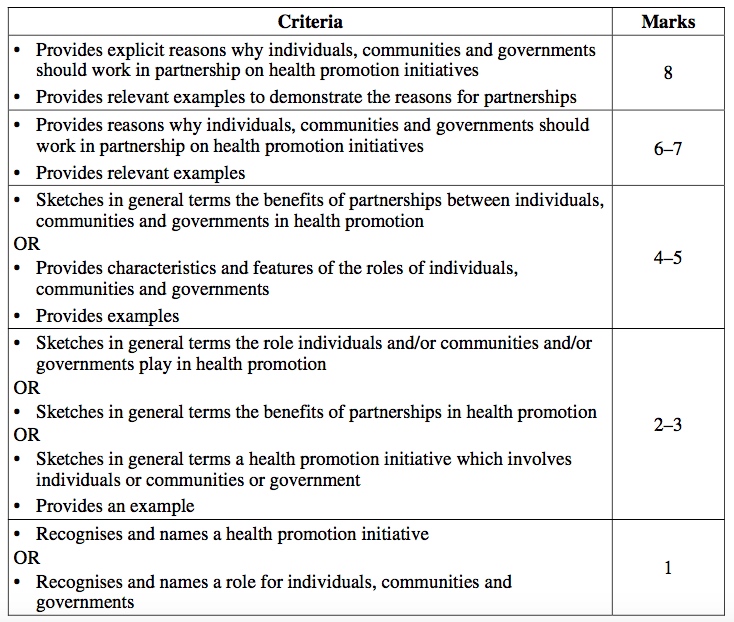As you continue to prepare for your upcoming HSC PDHPE half yearly exams, it is important that you know how to use marking criteria provided on the BOSTES website. In many of my previous posts I have encouraged you to do practice exam questions, including past papers and more. I then tell you that you need feedback, and that you can get this by using the marking criteria to mark your own work.
BUT, how do you use the marking criteria? This post is aimed to show you how to use marking criteria in order to get feedback on your answer and to help you to improve your HSC PDHPE exam results.
The BOSTES website provides marking guidelines for each HSC exam that contain the marking criteria and often sample answers, or at least what the answer should include. The BOSTES website states:
Marking guidelines are developed by the examination committee, and are used at the marking centre in marking student responses. For each question, the marking guidelines are contained in a table showing the criteria associated with each mark or mark range.[1]
If we look at Question 24 from the 2014 paper. The question states: “Explain why individuals, communities and governments should work in partnership on health promotion initiatives. Provide examples.” and is worth 8 marks. The marking criteria then is set out in a table.
It is important to first go through the criteria and determine the differences that are expected at each level. for example the difference between receiving 6-7 marks or 8 marks is that the reasons given are explicit and the examples demonstrate the reasons for partnership. This means that the 8 marks question has more words that link partnership with successful health promotion, with details and clear examples that show that partnership improves health promotion.
This is in contrast with an answer that provides reasons why partnership is better and gives examples. The difference is the ease at which the marker can identify your links between partnership and better results and the detail in the example that shows this link.
The marking criteria then, is used to guide your marking of the answer. The marking guide also has a section with the following
Answers could include:
- Increases the potential effectiveness of the health promotion initiative by:
- Sharing responsibility for health promotion initiatives increases access to expertise and resources
- Stakeholders needs and interests being addressed in the health promotion initiative
- Empowering individuals and communities to participate in the development and delivery of health promotion initiatives
- Increasing resources available: finance, expertise, time, physical resources
- More cost effective
- Increased capacity to address complex health problems
This section provides details if what you should have included in your answer. You do not have to include all of them, and you may include ones that are not provided, but this helps you to understand more about what should be covered in the content of your answer.
You then combine the two sections, the marking criteria and the answers should include, in order to mark your answer and get feedback on what else should be included or could have been included, and what you needed to do with the information in order to get full marks. That is, show the links clearly and use detailed examples which help to show the connection between partnership and and better health promotion.
I hope this is helpful and showed you, though briefly, how to use marking criteria in order to improve your study and exam results. Do remember to give your answer (and maybe the marking criteria) to your teacher for further feedback. But you will look like a better student, if you have already done it yourself, and then submit your second attempt to them 🙂
[1] https://www.boardofstudies.nsw.edu.au/hsc_exams/2015/#pr







